In light of the past years’ volatility in the workforce, employee growth should be a top priority for employers in 2022. Yes, workers learn on the job– but on-the-job training is different from a structured, personalized employee development program. The benefits of L&D programs range from discovering unexpected talents and bringing new employee development ideas to their teams, to increased productivity, better time management, more motivation, and discovering unrealized potential. Any company that isn’t already doing so would be wise to examine why employee development is so vital and make it a priority for 2022.
Note: Whether you have a program in place or not, don’t forget to download our latest L&D Industry Report with data from worldwide L&D programs and insights on how to create the most successful L&D program for your employees and organization!
Ongoing Employee Development
Ongoing Employee Development is the process of supporting and investing in an employee’s current skills, as well as acquiring new ones to suit the company’s needs. Whereas employee development is usually based on courses that address a specific skill, Continuous Employee Growth covers a wide variety of skills with a process that lasts as long as the worker is employed by the organization.
Benefits to the Organization of Developing Individuals
The business advantages of Continuous Employee Development are seemingly endless–and go beyond those of periodic L&D programs. They include:
Improve Employee’s Knowledge Retention
With traditional training methods, there is a certain rate of knowledge loss over time. This older study, for instance, showed that 90% of new skills are lost within a year. However, under a continuous process, frequent exposure to skills and knowledge results in a higher rate of retention.
Always Be Prepared
Implementing L&D programs can take time. Skills in need of improvement must be identified, along with experts; employees who have the time, motivation, and talent need to be signed up; courses and materials require funds and organization. As the program gets sorted out, the gap in skills may grow as the company loses competitiveness.
With a Continuous Employee Growth program in place, there is minimal ramp up time. Most of the resources and people that the program necessitates are already available.
In addition, it is now easier than ever before to begin Continuous Employee Development due to technological advances. learning and development programs once relied on traditional classroom-based methods and seminar-type programs. Companies can now make learning convenient for both the worker and the company through online courses and virtual one-on-one instruction.
Create a Culture of Learning
Organizations with Continuous Employee Development in place enjoy the benefits of a company culture that makes development a priority. According to LinkedIn, 94% of workers claim that internal career development programs would motivate them to stay longer with their employer.
In such organizations, learning is seen as standard, and not an exceptional activity that takes time away from more valuable pursuits. A learning culture also gets employees thinking in practical terms about developing the skills that they will need in new positions and over their career path.
This inspires a higher level of motivation and engagement. It also leads to improving an organization’s reputation, as 86% of employees think that a workplace should provide development opportunities. Finally, leaders in such companies look for learning opportunities to share with employees throughout their daily operations, which makes the L&D process more relevant.
Enjoy Increased Performance
For business, the bottom line is always top of mind. The real value of Continuous Employee Growth needs to translate into gains for the company.
According to Josh Bersin, Continuous Employee Development leads to significant quantifiable improvements. Compared to their peers, companies with a strong learning culture enjoy:
- A 46% greater chance of being first-to-market
- 37% higher employee productivity
- A 26% higher ability to deliver quality products
- A 17% greater chance to be the market leader
Increase Employee Motivation
When employees are not challenged and only need to fulfill everyday tasks, they can lapse into indifference. This is particularly true when even the chance of advancement through skill acquisition is not offered. Conversely, with continuous learning programs, employees are made aware of opportunities that will follow improved skills and their application. This can inspire workers to step out of their ‘comfort zone’ and put in more effort across the board.
Recognition of Talent
Continuous learning programs allow managers to see which employees are the most interested in advancing and the most capable at acquiring new skills (reskilling). This occurs both when the employee is taught by outside experts and when the manager directly trains the employee. With the extended learning associated with Continuous Employee Development, exceptional talent has frequent chances to be recognized.
The GrowthSpace Advantage: Development Opportunities for Employees of All Levels
In today’s business world, skills change rapidly. Every employee has skill requirements that are specific to their job, their ambitions, and their abilities. But how can L&D departments deliver the right courses to the right people?
The GrowthSpace’s L&D platform is a talent development solution that enables Continuous Education Development programs to define precise skill requirements on an individual basis. Based on proprietary technology, the platform is highly scalable and can accommodate the needs of large organizations, offering development opportunities for employees of all levels. For these and many more reasons, GrowthSpace is becoming the go-to implementation for global companies looking to provide effective Continuous Employee Growth.
Ready to turn insights into impact?
















